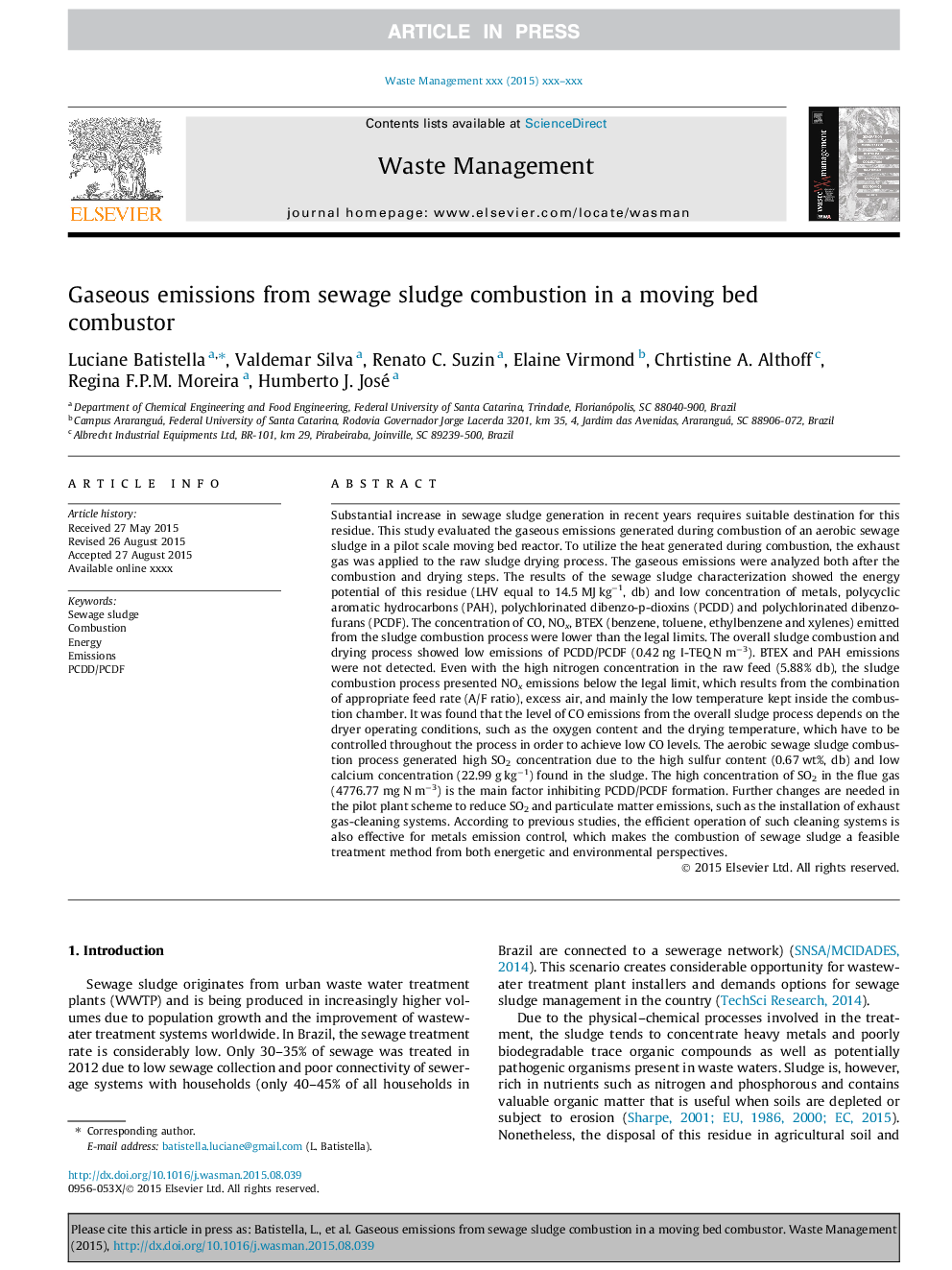| کد مقاله | کد نشریه | سال انتشار | مقاله انگلیسی | نسخه تمام متن |
|---|---|---|---|---|
| 6354515 | 1622639 | 2015 | 10 صفحه PDF | دانلود رایگان |
عنوان انگلیسی مقاله ISI
Gaseous emissions from sewage sludge combustion in a moving bed combustor
ترجمه فارسی عنوان
انتشار گازهای گلخانه ای از احتراق لجن فاضلاب در یک آتش سوزی در حال حرکت
دانلود مقاله + سفارش ترجمه
دانلود مقاله ISI انگلیسی
رایگان برای ایرانیان
کلمات کلیدی
موضوعات مرتبط
مهندسی و علوم پایه
علوم زمین و سیارات
مهندسی ژئوتکنیک و زمین شناسی مهندسی
چکیده انگلیسی
Substantial increase in sewage sludge generation in recent years requires suitable destination for this residue. This study evaluated the gaseous emissions generated during combustion of an aerobic sewage sludge in a pilot scale moving bed reactor. To utilize the heat generated during combustion, the exhaust gas was applied to the raw sludge drying process. The gaseous emissions were analyzed both after the combustion and drying steps. The results of the sewage sludge characterization showed the energy potential of this residue (LHV equal to 14.5 MJ kgâ1, db) and low concentration of metals, polycyclic aromatic hydrocarbons (PAH), polychlorinated dibenzo-p-dioxins (PCDD) and polychlorinated dibenzofurans (PCDF). The concentration of CO, NOx, BTEX (benzene, toluene, ethylbenzene and xylenes) emitted from the sludge combustion process were lower than the legal limits. The overall sludge combustion and drying process showed low emissions of PCDD/PCDF (0.42 ng I-TEQ N mâ3). BTEX and PAH emissions were not detected. Even with the high nitrogen concentration in the raw feed (5.88% db), the sludge combustion process presented NOx emissions below the legal limit, which results from the combination of appropriate feed rate (A/F ratio), excess air, and mainly the low temperature kept inside the combustion chamber. It was found that the level of CO emissions from the overall sludge process depends on the dryer operating conditions, such as the oxygen content and the drying temperature, which have to be controlled throughout the process in order to achieve low CO levels. The aerobic sewage sludge combustion process generated high SO2 concentration due to the high sulfur content (0.67 wt%, db) and low calcium concentration (22.99 g kgâ1) found in the sludge. The high concentration of SO2 in the flue gas (4776.77 mg N mâ3) is the main factor inhibiting PCDD/PCDF formation. Further changes are needed in the pilot plant scheme to reduce SO2 and particulate matter emissions, such as the installation of exhaust gas-cleaning systems. According to previous studies, the efficient operation of such cleaning systems is also effective for metals emission control, which makes the combustion of sewage sludge a feasible treatment method from both energetic and environmental perspectives.
ناشر
Database: Elsevier - ScienceDirect (ساینس دایرکت)
Journal: Waste Management - Volume 46, December 2015, Pages 430-439
Journal: Waste Management - Volume 46, December 2015, Pages 430-439
نویسندگان
Luciane Batistella, Valdemar Silva, Renato C. Suzin, Elaine Virmond, Chrtistine A. Althoff, Regina F.P.M. Moreira, Humberto J. José,
